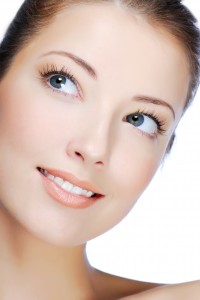 Restylane is the brand name of the first hyaluronic acid injectable dermal filler approved by the FDA. Originally the company that produces Restylane, Q-Med AB, received FDA approval for the filler to be used as a treatment for deep nasolabial folds, that is, the deep crease that can occur between the nose and the corners of the mouth.
Restylane is the brand name of the first hyaluronic acid injectable dermal filler approved by the FDA. Originally the company that produces Restylane, Q-Med AB, received FDA approval for the filler to be used as a treatment for deep nasolabial folds, that is, the deep crease that can occur between the nose and the corners of the mouth.
Since the approval of Restylane in 2003, the injectable dermal filler has been used by cosmetic surgeons and dermatologists for so much more. Restylane has been used successfully to “fill in” virtually any wrinkle or facial crease. It has also been used to augment the lips and make them appear fuller.
Since wrinkles tend to give away the age of the face, filling them in is one way to (temporarily) reverse some of the signs of aging. The manufacturers of Restylane state that over ten million Restylane injections have been delivered across the globe since its release.
Just like nature, only better
The main ingredient of Restylane, hyaluronic acid, is found throughout the body naturally. It is part of the extracellular matrix, that is, the supporting structure that exists between most cells in the body. Rather than try to collect hyaluronic acid for mammals in which it is abundant, the manufacturers of Restylane turn to bacteria to pump out large amounts of hyaluronic acid.
Since the chemical is simply excreted by the bacteria, it is very easy to purify. Also, by using genetically engineered bacteria instead of other sources of hyaluronic acid, the risk of allergic reaction with Restylane injection is much smaller. The other advantage of allowing bacteria to produce hyaluronic acid is that molecule is highly cross-linked.
Why is this a good thing? Cross-linked hyaluronic acid is harder for the body to break down which means that Restylane tends to last longer than simple, lone molecules of hyaluronic acid. Restylane also lasts a reasonably long time—under ideal circumstances, this dermal filler may fill in wrinkles for up to a year before retreatment is needed.
The cross-linked hyaluronic acid molecules also absorb and hold onto moisture. You can imagine the plumping action this can have for skin injected with Restylane.
Quick and painless
Restylane is injected into the skin using a extremely fine needle; the needle is so small that it barely causes any pain at all when it is placed in the skin. Most people state that they experienced no pain at all. In order to make it a completely painless process, an anesthetic cream or spray may be applied to the face immediately before the dermal filler is injected. If you are scheduled for a more involved or extensive augmentation or procedure, the physician may use a local anesthetic.
Another benefit of Restylane is that it takes very little time for a treatment. Most procedures are complete in less than a half an hour, including ones requiring local anesthesia. If you find a doctor that has an efficiently run office, you could have a Restylane treatment during your lunch break!
Why does Restylane continue to be so popular?
For one reason, ten million treatments is a fairly long track record for a medication that has only been FDA-approved since 2003. Patients continue to be interested in the latest treatment, but they also want to know that the treatment is safe. In general, Restylane is very safe and few cases of serious complications and side effects have been reported.
It is not unusual for patients to experience some redness and puffiness soon after the injection. Itchiness and bruising may occur as well, but can be minimized by having Restylane injected by a medical professional.
While there are many options when it comes to dermal fillers, the original hyaluronic acid dermal filler, Restylane, deserves a careful look as you make your decision.
